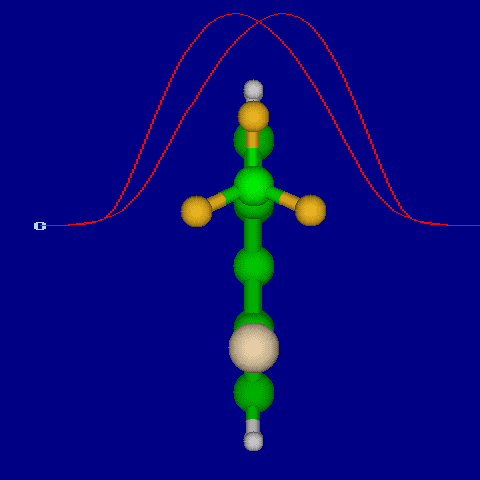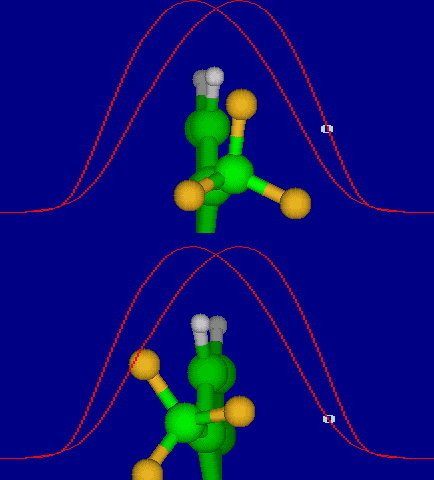
Новосибирский институт органической химии им. Н.Н. Ворожцова СО РАН
Лаборатория изучения механизмов органических реакций
 |
 |
 |
 |
 |
 |
Concerning to the principle of microscopic reversibility
In a reversible reaction, the mechanism in one direction is exactly the reverse of the mechanism in the other direction.Is it true?
NH2 rotation in formamide

Energy (without ZPE) and geometry by DFT/PBE/L1 (cc-pVDZ) (PRIRODA program).
Ground state is flat, nitrogen being pyramidal in transition states.
Calculated barriers of the NH2 rotation are 18.8 and 20.1 kcal/mole.
Animation of IRC path for the NH2 rotation (red curves are calculated IRC energy profiles)

Download IRC in xyz format
CF3 rotation in 1-chloro-8-(trifluoromethyl)naphthalene

Energy (without ZPE) and geometry by DFT/PBE/L1 (cc-pVDZ) (PRIRODA program).
Barrier of the CF3 rotation is 7.5 kcal/mole.
Ground state is symmetric, transition state is unsymmetric.
Animation of IRC path for the CF3 rotation and illustration of the geometries difference (red curves are calculated IRC energy profiles)


Download IRC in xyz format
Related example is internal rotation in acrolein excited state: Lantano post on forum (in Russian).
GLOSSARY OF TERMS USED IN PHYSICAL ORGANIC CHEMISTRY:
microscopic reversibility, principle of
In a reversible reaction, the mechanism in one direction is exactly the reverse of the mechanism in the other direction. This does not apply to reactions that begin with a photochemical excitation. See also chemical reaction, detailed balancing.
See also some information from internet and discussion on forum (in Russian)